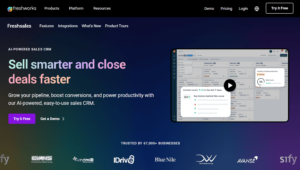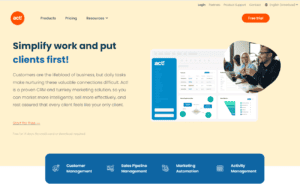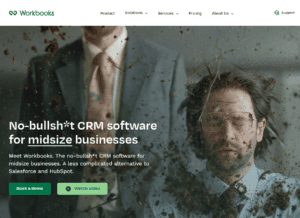When you practice cold calling as part of your sales career, you enter an unknown realm and conquer it with your interpersonal selling capabilities.
Despite having no prior knowledge of your call, you approach complete strangers. What are the best tips and strategies for cold calling that are actually effective?
One of the most cost-effective methods for attracting new clients is cold calling. Why not just pick up the phone and speak instead of writing a blog or wearing a creative hat to approach prospects?
Sure. After the first phone call, however, it is difficult to sell a product. Cold calling isn’t designed for that. Cold calling is a great way to introduce your company and product to a potential sales lead.
Cold calling in B2B sales
Almost all companies do not use cold calling anymore as it has become a thing of the past. They either don’t know how to cold call or are waiting for a miracle to increase their sales. However, many companies have found success with this old-fashioned technique.
B2B sales can be improved by cold calling when done correctly. As a result, you increase your sales pipeline and get a better understanding of the buyer’s needs and concerns.
Cold calling is a skill that requires persistence, patience, and proficiency. So let’s explore some of the top cold-calling tips.
Cold calling tips
Identify verticals
It is imperative that you become familiar with several verticals before you attempt to conduct B2B cold calls. Keep track of what it takes for businesses with specific characteristics to flourish. By doing so, you can tailor your calls more thoughtfully and be more effective – and you can avoid the impersonality typical of cold calling.
Prospect research
This one emphasizes the importance of personalization in the same vein as the previous one. You must speak to the needs of your prospects individually instead of just adding their names to a list. The first step is to conduct thorough research.
Make sure you are familiar with the company you will be dealing with. To address certain questions, you may wish to look at their website and other materials. How does it work? Which products does it offer? Who are its competitors? What is its competitive position? What do similar businesses need from you?
In any case, you should have a pretty good idea of who’s on the other end of the phone – and treat them like individuals rather than just another faceless, nameless prospect.
Establish a positioning statement
You can introduce the benefits of your product or service quickly and effectively on a cold call by developing a positioning statement that ties your product or service to the needs of a prospective customer.
It’s natural to be rushed when making a cold call. While keeping a prospect’s attention, you don’t have the luxury of talking about every last cool, game-changing feature of your offering.
Creating a position statement allows you to express value within the ever-shrinking window of your prospect’s patience. Position statements are one of the best ways to make the most of this time-limited window.
Keeping it brief without sacrificing too much detail is the key. You should always have one at the ready during a cold call.
Respect their time
Performing cold calls is naturally time-consuming for every sales representative, as mentioned previously. Prospects aren’t just responsible for handling cold calls and listening to what others have to say.
Remember that potential customers probably have more to do than talk to you if they manage to connect with you. Avoid lengthy ramblings, tangents, or overemphasizing your monologue.
You do not want to end every call without getting your point across, but you also don’t want to overwhelm your prospects. Make sure that the balance you strike is appropriate, and respect their professional lives after your call.
Ask open-ended questions
It isn’t effective to do a monologue about every benefit and feature a company’s product or service can offer the prospect until they hang up. Cold calling is more or less a means to an end, but there must still be a conversation involved.
Your ability to ask thoughtful, open-ended questions will give your prospect the opportunity to express themselves, provide context, and persuade them to take the next steps.
You should never end your lines of questioning with a simple “yes” or “no.” Every line of questioning should have some kind of explanation. A single word from your prospect can often lead to a dead-end – and as you can probably guess, dead ends don’t lend themselves to persistently successful cold calls.
Expect objections
Your prospect is most likely not to pick up a cold call, listen to what you have to say for a long time, and conclude the call as soon as possible.
Cold calls to B2B organizations are no different since objections are commonplace in virtually every kind of sales conversation. Prepare for pushback most of the time: it’s in your best interest to anticipate it.
Know how to best address the objections that your product or service tends to raise. Furthermore, you should apply any research you may have done ahead of your call.
Which issues may warrant some further back and forth between you and your prospect? What challenges have you encountered when dealing with similar prospects? Be familiar with both the company-specific and general concerns your offering may raise.
Have a close in mind
Cold calling should always be aimed at achieving something; it should never be conducted without a purpose. Because of this, you can never underestimate the importance of closing when making cold calls.
A “close” simply needs to be a step forward – it does not have to lead to a deal. Perhaps you can arrange to speak with your prospect later this week or get five more minutes of their time. If you have a particular goal in mind, let it direct your call.
Follow up after your call
There aren’t always a slam dunk cold calls. If you make your first pass, there’s a good chance you won’t schedule a meeting. If you want to make something of your efforts, you must follow up with a prospect.
Following up with your prospect within a day after the initial call may be worthwhile if they say they cannot meet with you until next week. Do not just say “Thank you for your time” in a conventional way.
Between your initial conversation and the time they make their final decision, you might be able to provide some information that will help them better understand where you are coming from. Giving up prematurely will cost you a significant amount of business – it doesn’t hurt to follow up regularly to keep your name in mind.
Conclusion
Businesses benefit greatly from cold calling as a B2B marketing technique. Getting on the phone with a prospect, even if they don’t yet intend to buy, is an excellent way to introduce your brand. Cold calling creates a positive image which provides the opportunity for a future sale. But traditional cold calling may not be effective. Use the tips we have discussed to be innovative and creative.






